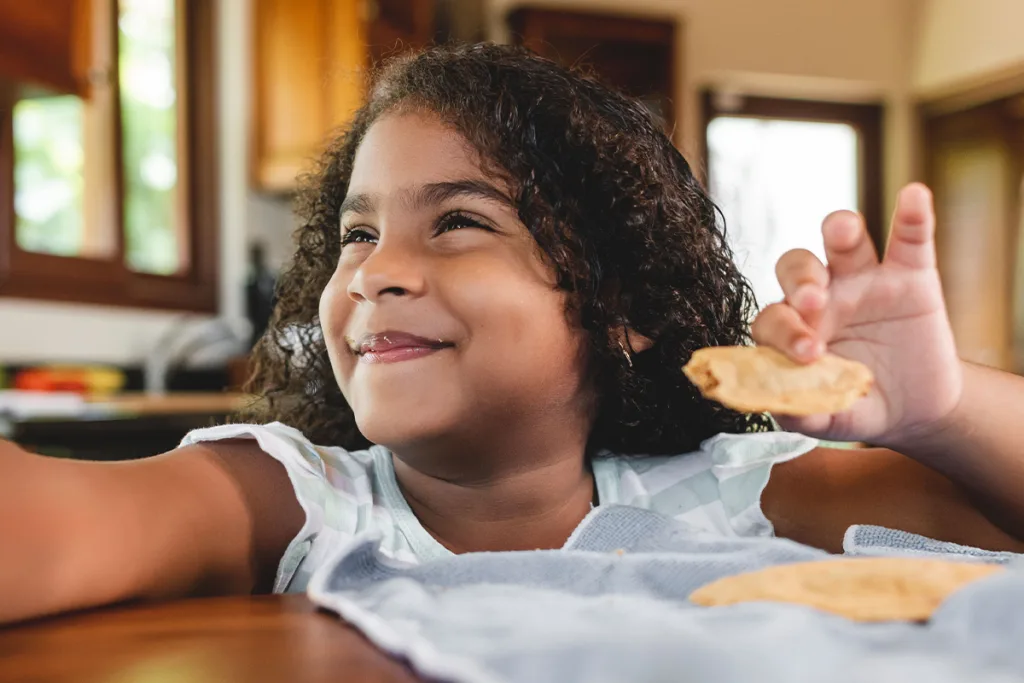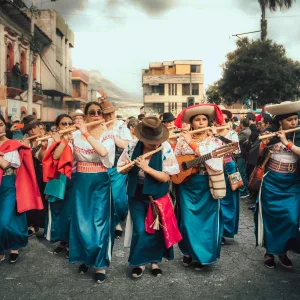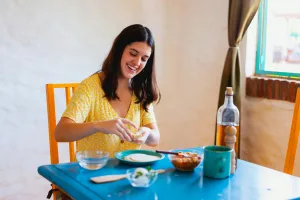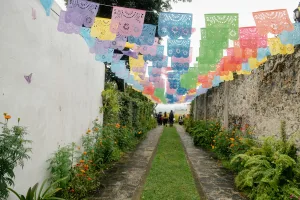With a population exceeding 422 million, South America is a continent teeming with vitality and is home to well-traveled countries like Brazil, Argentina, Peru, and Colombia. Each country boasts a diverse culture with unique traditions formed by indigenous heritage, colonial history, immigration patterns, and geographical landscapes.
By learning about the customs, traditions, and beliefs of the South American people, we can gain valuable insights into the complexities of the human experience, broadening our perspectives and challenging our assumptions. Let’s explore South American culture more deeply by looking at 10 common traditions that anyone can celebrate and will surely create cherished memories for everyone involved.
Understanding the Rich Culture of South America
South America is a continent where diversity thrives, and cultural identity is a mosaic of different languages and ways of life. From the majestic Andes to the rhythmic heartbeats of the Amazon, every corner of South America has a wealth of history and heritage waiting to be uncovered. South America culture facts can be hard to appreciate by simply reading about them — they require hands-on immersion.
For families eager to get involved in this diverse culture, here are 10 captivating ways to celebrate South American culture together:
10 Ways to Celebrate South American Traditions at Home
Step into the vibrancy of culture in South America with these fun traditions to celebrate at home. From donning colorful costumes and dancing to lively music for Carnaval to embracing the ancient rituals of Inti Raymi with storytelling sessions and sun-themed crafts, families can ignite a passion for cultural exploration and uncover facts about South America in their own homes.
1. Dress Up for Carnaval
One of the best-known events in South American culture and traditions is Carnaval. As the most famous festival in South America, Carnaval is known for its extravagant parades, vibrant costumes, and pulsating music.
Families can bring the spirit of Carnaval into their homes by organizing a dress-up day. Everyone can don colorful costumes, create homemade masks, and dance to lively music to celebrate the occasion. This celebration not only introduces children to the joy of cultural festivals but also encourages creativity and self-expression.
 2. Participate in Inti Raymi
2. Participate in Inti Raymi
Inti Raymi, or the Festival of the Sun, is an ancient Incan celebration that honors the sun god, Inti. Families can mark this occasion by organizing a special outdoor gathering to watch the sunrise, followed by storytelling sessions about Incan mythology and traditions.
Activities like making sun-themed crafts or preparing traditional Andean dishes can further immerse children in the rich South American culture.
3. Celebrate the Kids with Día del Niño
Día del Niño, or Children’s Day, is celebrated across South America to honor the importance of children in society and South America traditions. Families can celebrate this day by organizing fun-filled activities and surprises for their kids, such as picnics in the park, treasure hunts, or movie nights. It’s a time to cherish childhood innocence and joy while instilling values of love and appreciation within the family.
4. Dance Away to La Fiesta de San Juan
La Fiesta de San Juan is a traditional celebration that marks the beginning of summer across South America. Families can recreate this festive atmosphere at home by organizing a backyard barbecue or bonfire, complete with traditional music and dancing. Encouraging children to participate in traditional dances like the Samba or the Cueca helps them connect with the rhythm and spirit of South America culture.
5. Honor Dia de los Muertos
Dia de los Muertos, or Day of the Dead, is a Mexican tradition that has spread throughout South America. It honors deceased loved ones with colorful altars, offerings, and remembrances. Families can observe this tradition by creating their own ofrendas (offerings) at home, featuring photos, candles, and favorite foods of departed family members. This celebration teaches children about the cycle of life and the importance of honoring the departed.
 6. Cook Traditional Dishes Together
6. Cook Traditional Dishes Together
Cooking traditional dishes together allows families to bond over shared experiences in the kitchen. It offers a hands-on way to delve into South America’s rich culinary heritage. Each dish tells a story of its region, with ingredients and techniques passed down through generations.
For instance, empanadas and savory turnovers with various ingredients offer a taste of Spanish influence fused with indigenous flavors. Ceviche, a refreshing seafood dish marinated in citrus juices, reflects the coastal traditions of Peru and Ecuador. Feijoada, a hearty bean stew with pork, is a culinary gem from Brazil, showcasing the country’s diverse cultural roots.
As families chop, stir, and savor their creations, they learn about the cultural significance of each dish and deepen their appreciation for the interconnectedness of food and heritage in South America.
7. Learn Traditional South American Culture by Drumming
Experience the beat of South American culture by exploring traditional drumming. Whether it’s the samba rhythms of Brazil or the candombe of Uruguay, families can immerse themselves in the vibrant sounds of South America by learning basic drumming techniques together.
As families delve into the rhythmic intricacies of traditional South American drumming, they connect with the soulful beats that echo through the continent’s history and embrace a form of expression deeply rooted in cultural identity.
8. Discover the Art of Capoeira
Capoeira, a unique blend of martial arts, dance, and music from Brazil, offers families a dynamic and culturally enriching activity to enjoy together. Learn basic capoeira movements, rhythms, and songs, immersing yourselves in this captivating Afro-Brazilian tradition that promotes physical fitness, rhythm, and teamwork.
9. Explore Andean Music with a Pan Flute Workshop
Dive into the mesmerizing melodies of the Andes with a hands-on pan flute workshop. Learn to play traditional Andean tunes and explore the cultural significance of this iconic instrument. Pan flute music is one of the oldest and most enduring traditions in South America, dating back to ancient times.
 10. Ignite Creativity with South American Folk Art Workshops
10. Ignite Creativity with South American Folk Art Workshops
Engage in the vibrant world of South American folk art by organizing interactive workshops at home. From creating colorful papel picado (colorful paper banners) inspired by Mexican traditions to crafting intricate Mola designs influenced by indigenous cultures in Colombia, families can explore a wide range of artistic techniques and styles.
Find an Au Pair with Go Au Pair
As your trusted partner in cultural exchange and childcare solutions, Go Au Pair is dedicated to connecting families with qualified and caring Au Pairs. With our extensive network of Au Pairs from around the world, we understand the importance of finding the perfect match for your family’s unique needs. From browsing our diverse selection of au pairs to conducting thorough interviews using our guide of Au Pair interview questions, we empower host families to confidently make informed decisions. Explore our website today to discover the perfect au pair for your family.



 2. Participate in Inti Raymi
2. Participate in Inti Raymi 6. Cook Traditional Dishes Together
6. Cook Traditional Dishes Together 10. Ignite Creativity with South American Folk Art Workshops
10. Ignite Creativity with South American Folk Art Workshops